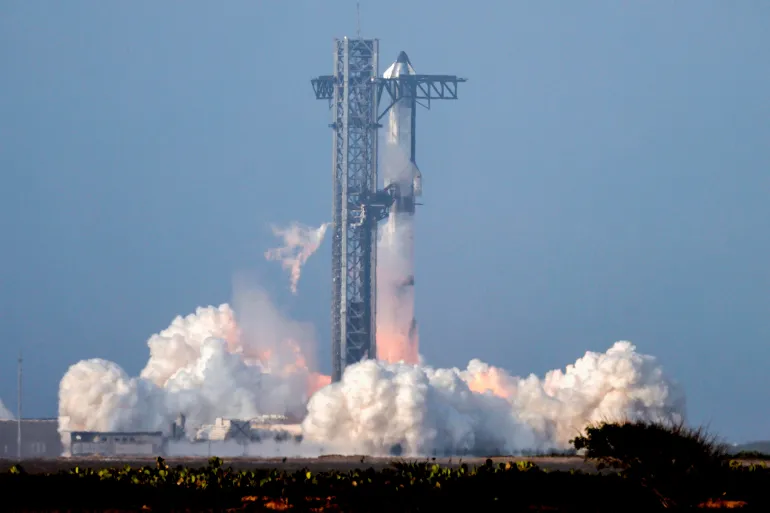SpaceX’s much-anticipated fourth test flight of its Starship rocket ended in disappointment on Wednesday, as the massive vehicle lost control and communication was cut roughly 30 minutes after liftoff. The failure marks another setback in SpaceX’s efforts to develop the world’s most powerful launch system and realize its long-term vision for Mars exploration.
The rocket launched successfully from the company’s Starbase facility in Boca Chica, Texas, and soared to space as planned. However, mission control confirmed that they lost contact with the Starship upper stage as it re-entered Earth’s atmosphere, leading to the vehicle’s destruction before completing its planned trajectory.
Mission Details and Failure
The mission aimed to demonstrate several technical capabilities, including successful re-entry and splashdown of the Starship upper stage. According to SpaceX, the Super Heavy booster — the lower part of the two-stage system — completed its separation and returned toward the Gulf of Mexico for a controlled landing.
However, about 30 minutes into the flight, the Starship upper stage failed to execute its re-entry maneuver as expected. Livestreams of the event showed the rocket breaking apart, and telemetry data ceased shortly afterward.
“We lost data from the second stage… the vehicle was lost during reentry,” SpaceX commentator Dan Huot said during the broadcast.
Elon Musk’s Ambitions Face Another Delay
The Starship system is critical to Elon Musk’s ambitions for interplanetary colonization and NASA’s Artemis program, which aims to return astronauts to the Moon. The rocket, standing nearly 120 meters tall, is designed to carry large payloads and passengers to destinations like the Moon and Mars.
Despite Wednesday’s failure, SpaceX framed the flight as a partial success. “We’ve learned a lot,” Huot said, emphasizing that test flights are expected to uncover flaws and provide vital data for future launches.
Musk, who had previously acknowledged the risks, did not immediately comment following the mission but has historically emphasized that rapid iteration and testing are core to SpaceX’s development philosophy.
Prior Test Flights and Progress
This was the fourth integrated flight of the Starship and Super Heavy system. The first three attempts in 2023 and 2024 ended with similar results — either explosions shortly after liftoff or failed re-entries. However, each test has shown incremental progress.
In the third test earlier this year, the Starship stage completed several objectives before being destroyed during re-entry. SpaceX has since implemented upgrades to heat shields and control systems, hoping to overcome the issues plaguing earlier attempts.
Implications for NASA and Mars Goals
NASA has selected Starship to land astronauts on the Moon as part of its Artemis III mission, currently slated for later this decade. The agency is closely watching SpaceX’s progress, given the rocket’s central role in its deep space strategy.
NASA Administrator Bill Nelson previously praised SpaceX’s progress but stressed that Starship must demonstrate reliable reusability and safe performance before carrying crew.
For Musk, the long-term goal remains Mars colonization — an ambition that hinges entirely on making Starship work. Each failure delays the timeline and adds scrutiny to the project’s feasibility and sustainability.
What’s Next?
SpaceX engineers will now analyze the flight data to determine what caused the vehicle’s loss of control during re-entry. The company is expected to implement further modifications before the next test, which could occur within months, pending regulatory approval.
The Federal Aviation Administration (FAA) will likely investigate the incident, as it did with previous failures, to ensure compliance with safety standards.
Despite the setback, SpaceX maintains its commitment to pushing forward with Starship’s development. As Huot noted in the broadcast, “Each test brings us closer to our goal.”
While the loss of the Starship upper stage is a blow to SpaceX’s ambitious plans, the company remains undeterred in its high-risk, high-reward quest to revolutionize space travel.
Source; Al Jazeera



